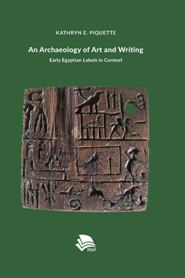| Main » Ad Board » ДРЕВЕН ЕГИПЕТ И АФРИКА » Археология |
| 24.12.2018, 13:22 | |
Крайно интересна монография върху привидно прозаична тема. Изследването е съсредоточено върху декоративните плочки с надписи и изображения от епохата на Ранното царство в Древен Египет, най-вече времето на легендарната I династия (края на XXXII- началото на XXX в. пр.н.е). Тези пластини са изработвани от кост, слонова кост, хипопотамови зъби, дърво, камък и други материали и са служели като облицовъчна украса на най-различни предмети за бита, в т.ч. и погребален инвентар. Така те са съхранени до наши дни в гробниците на Абидос, Накада, Сакара, Хелуан, Тура, Гиза, Абу Роаш, Делтата на Нил и на други места.
Kathryn Piquette - An Archaeology of Art and Writing. Early Egyptian Labels in Context, Cologne, Modern Academic Publishing (MAP), 2018- на английски език, от Modern Academic Publishing (MAP)-University of Cologne, формат PDF.Сваляне с ляв бутон (downloading by left button) и после през бутона Download.
Kathryn Piquette - An Archaeology of Art and Writing. Early Egyptian Labels in Context, Cologne, Modern Academic Publishing (MAP), 2018- на английски език, от Google Docs,формат PDF. Сваляне с ляв бутон (downloading by left button) от страницата на предоставящия сървър, после през бутона стрелка надолу/after by down arrow button. Като докторантска дисертация/ As a Ph.D. Thesis: Kathryn E. Piquette - Writing, 'art', and society: a contextual archaeology of the inscribed labels of late predynastic - early dynastic Egypt. Volume I-II. Text-Figures, London, University of London (UCL), 2007- на английски език, от The University of London (UCL), формат PDF.Свалянето става с десен бутон (downloading by right button) и Save as...
| |
| Views: 1230 | Placed till: 24.01.2019 | Rating: 0.0/0 | |

